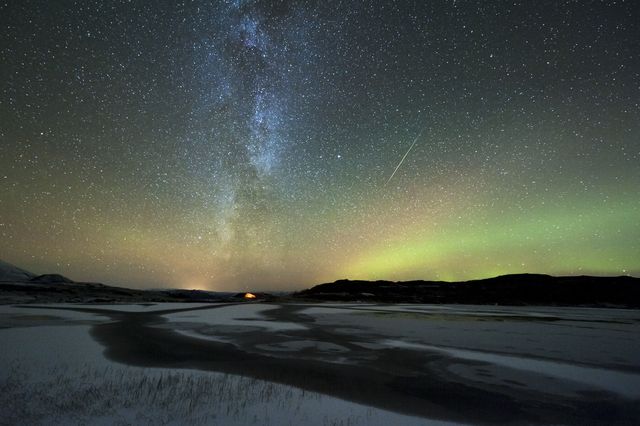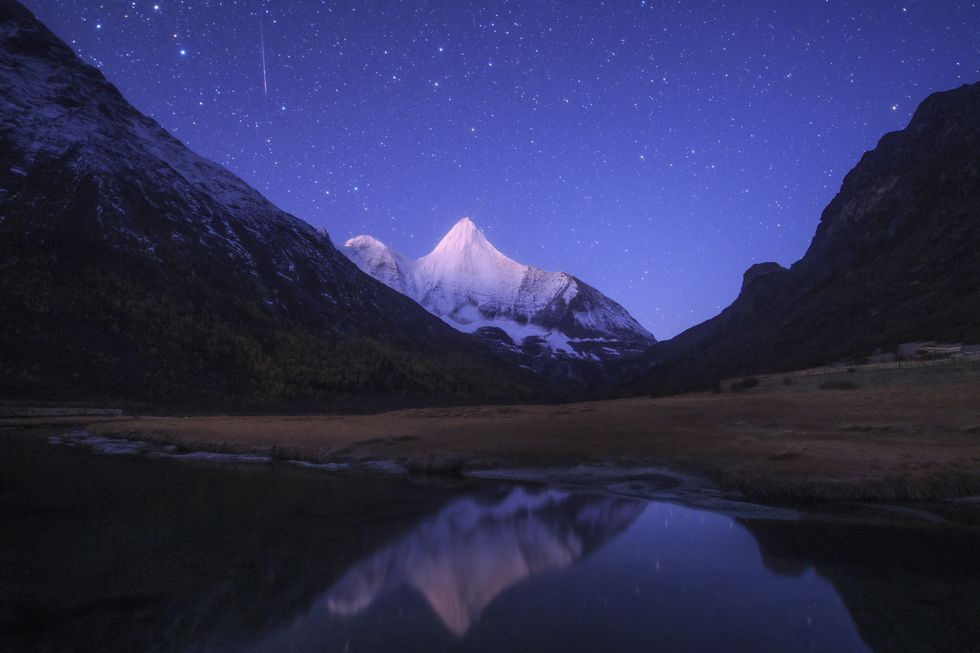Halley's Comet won't grace Earth's skies again until 2061, but its enormous cloud of debris arrives this month in the form of dozens of shooting stars darting above the horizon.
The Orionid meteor shower occurs every October as the rocky particles break away from the comet and pass through Earth's upper atmosphere. The stunning show seemingly radiates from the constellation Orion, lending the phenomenon its name.
This year, the meteors will begin on October 2 and last until November 7, with the shower peaking on October 20 when up to 25 meteors per hour will streak through the skies. That Friday night is shaping up perfectly for viewers. The apex lasts into early Saturday morning, so early risers can go back to bed instead of running off to work. Even better, the new moon will also set that evening for optimal viewing conditions, says AccuWeather Senior Meteorologist Dave Samuhel.
To catch the most meteors, head outside after midnight, away from light pollution if possible. Then, settle in and wait. The Orionids move quickly but leave visible trails in the sky, so keep your eyes locked on wherever you spot movement, the Sierra Club advises.
Don't forget to make a wish!

Caroline is a writer and editor with almost a decade of experience. From 2015 to 2019, she held various editorial positions at Good Housekeeping, including as health editor, covering nutrition, fitness, wellness, and other lifestyle news. She's a graduate of the Medill School of Journalism and dreams of the day Northwestern will go back to the Rose Bowl.














